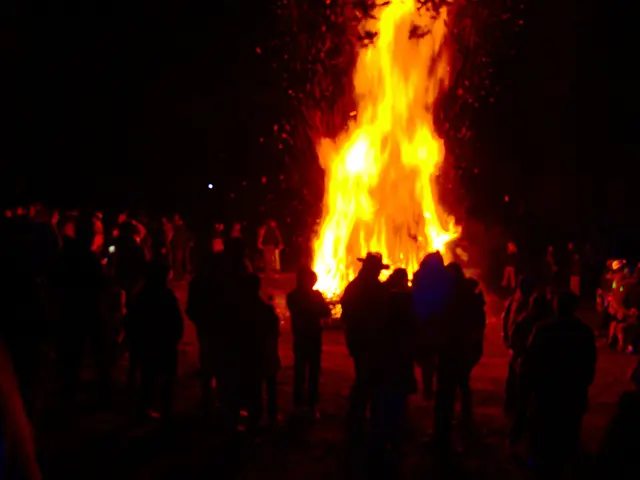Early universe Galaxies, colloquially known as 'Sleeping Beauties', discovered to slumber in unexpected locations by the James Webb Space Telescope
Discovering Dormant Galaxies in the Early Universe
In a groundbreaking study, astronomers have discovered over a dozen dormant galaxies within the first billion years after the Big Bang. These findings, presented in a preprint on arXiv on June 27, challenge previous models of galaxy formation and provide new insights into the dormancy of early galaxies.
The dormancy of these galaxies, periods when they stop forming stars, is primarily attributed to several factors affecting the availability and state of the cold gas needed for star formation, as observed by the James Webb Space Telescope (JWST).
Key factors include:
- Supermassive Black Holes (SMBHs) at galaxy centers: These black holes emit intense radiation that heats and depletes the cold gas necessary for star formation. This radiation-driven heating disperses the gas, preventing it from condensing into new stars and causing the galaxy to become quiescent or "dormant."
- Stellar feedback: Energy from supernovae explosions, stellar winds, and starlight can expel gas from the galaxy or heat it up, temporarily halting star formation. This phase of dormancy is typically temporary, lasting around 25 million years, after which expelled gas can cool and fall back, potentially reigniting star formation.
- Environmental effects: Larger neighboring galaxies can strip away cold gas from smaller galaxies or heat the gas through interactions, further inhibiting star formation by depleting the cold gas supply.
These factors affect star formation by limiting or removing the cold gas reservoirs critical for forming new stars. The JWST has revealed a broader variety of dormant early galaxies than previously known, showing that galaxy quiescence in the early universe is more common and diverse, involving galaxies of various masses.
An upcoming JWST program called "Sleeping Beauties" will be dedicated to discovering dormant galaxies in the early universe, allowing astronomers to estimate how long a galaxy remains in this quiet phase and help them understand the bursty star formation process.
The international team of astronomers discovered 14 dormant galaxies with a wide range of masses in the early universe. These galaxies, ranging from about 40 million to 30 billion solar masses, have been quiet for at least 10 million to 25 million years, following a stop-and-go fashion of star formation rather than continuously forming stars.
The current properties of these galaxies suggest that they are not dead but are simply going through a dormant phase. There is still uncertainty about whether these galaxies will remain dormant for another 50 million years, which could indicate a different cause for their quenching.
The discovery of these dormant galaxies supports a cycle of fits and starts in early galaxy formation and provides valuable data for future studies. Once the research is peer-reviewed, the findings could be revised, but for now, they offer a fascinating glimpse into the complex and dynamic nature of galaxy formation in the early universe.







